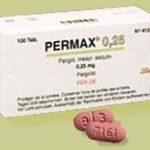
Phenazopyridine/Hyoscyamine/Butabarbital – Oral
Medication Uses How To Use Side Effects Precautions Drug Interactions Overdose Notes Missed Dose Storage USES: This medication is used to relieve symptoms caused by irritation of the urinary tract such as pain, burning, the feeling of needing to urinate urgently or frequently, and bladder spasms. This drug does not treat the cause of the urinary irritation, but it can help relieve the symptoms while other treatments take effect. This medication is a combination of three different drugs. Phenazopyridine is a dye that works as a painkiller to soothe the lining of the urinary tract. Hyoscyamine belongs to a class of drugs known as anticholinergics/antispasmodics. It works to decrease bladder spasms. Butabarbital is a sedative that helps to relieve the anxiety that can happen when you experience urinary pain and spasms. HOW TO USE: Take this medication by mouth 4 times a day after meals and at bedtime or as directed by your doctor. If you are taking this medication along with antibiotics for symptoms related to a urinary tract infection, do not take it for more than 2 days without talking to your doctor.Take each dose with a full glass of water, and drink plenty of fluids while taking this drug.Inform your doctor if your condition persists or worsens. SIDE EFFECTS: Stomach upset, headache, dry mouth, dry skin, drowsiness, dizziness, blurred vision, decreased sweating, diarrhea, or constipation may occur. If any of these effects persist or worsen, notify your doctor or pharmacist promptly.To relieve dry mouth, suck on (sugarless) hard candy or ice chips, chew (sugarless) gum, drink water, or use a saliva substitute.Remember that your doctor has prescribed this medication because he or she has judged that the benefit to you is greater than the risk of side effects. Many people using this medication do not have serious side effects.Tell your doctor immediately if any of these unlikely but serious side effects occur: mental/mood changes (such as agitation, confusion, depression, hallucinations, thoughts of suicide, nightmares), muscle/nerve/joint pain.Tell your doctor immediately if any of these rare but very serious side effects occur: yellowing skin/eyes, dark/bloody urine, change in the amount of urine, difficulty urinating, stomach/abdominal pain, vomiting, fever, chills, easy bruising/bleeding, unusual tiredness, shortness of breath, fast/irregular heartbeat, seizures.A very serious allergic reaction to this drug is unlikely, but seek immediate medical attention if it occurs. Symptoms of a serious allergic reaction may include: rash, itching/swelling (especially of the face/tongue/throat), severe dizziness, trouble breathing.This is not a complete list of possible side effects. If you notice other effects not listed above, contact your doctor or pharmacist.In the US -Call your doctor for medical advice about side effects. You may report side effects to FDA at 1-800-FDA-1088.In Canada – Call your doctor for medical advice about side effects. You may report side effects to Health Canada at 1-866-234-2345.
PRECAUTIONS: Before taking phenazopyridine/hyoscyamine/butabarbital, tell your doctor or pharmacist if you are allergic to any of these drugs; or if you have any other allergies. This product may contain inactive ingredients, which can cause allergic reactions or other problems. Talk to your pharmacist for more details.This medication should not be used if you have certain medical conditions. Before using this medicine, consult your doctor or pharmacist if you have: kidney disease, liver disease, blood disorders (e.g., G6PD deficiency, hemolytic anemia, porphyria), glaucoma, urinary blockage problems, enlarged prostate.Before using this medication, tell your doctor or pharmacist your medical history, especially of: stomach or intestinal disorders, overactive thyroid (hyperthyroidism), heart problems (e.g., coronary artery disease, congestive heart failure, arrhythmias), high blood pressure, mental/mood disorders, history of drug abuse, severe breathing problems, certain nervous system problems (autonomic neuropathy), myasthenia gravis.This drug may make you dizzy or drowsy or cause blurred vision. Do not drive, use machinery, or do any activity that requires alertness or clear vision until you are sure you can perform such activities safely.Avoid alcoholic beverages while using this medication, since alcohol may intensify the side effects.Before having surgery, tell your doctor or dentist that you are using this medication.Phenazopyridine can dye your urine and tears orange-red. This may stain clothing and contact lenses. Do not wear contact lenses while using this medication. Urine and tears will return to normal color after the medication is stopped.This drug may increase the risk for heatstroke because it decreases sweating. Avoid becoming overheated in hot weather, saunas, and during exercise or other strenuous activity.Older adults may be more sensitive to the side effects of this drug, especially drowsiness, confusion, constipation, difficulty urinating, change in amount of urine, or yellowing skin/eyes. Drowsiness and confusion can increase the risk of falling.This medication is not recommended for use during pregnancy. Consult your doctor for more details.This medication passes into breast milk. Consult your doctor before breast-feeding. DRUG INTERACTIONS: Your healthcare professionals (e.g., doctor or pharmacist) may already be aware of any possible drug interactions and may be monitoring you for it. Do not start, stop or change the dosage of any medicine before checking with them first.This drug should not be used with the following medications because very serious interactions may occur: pramlintide, sodium oxybate.If you are currently using any of these medications listed above, tell your doctor or pharmacist before starting this drug.Before using this medication, tell your doctor or pharmacist of all prescription and nonprescription/herbal products you may use, especially: antidepressants (tricyclics such as amitriptyline, MAO inhibitors such as phenelzine), certain antibiotics (doxycycline, metronidazole), beta blockers (e.g., metoprolol, propranolol), "blood thinners" (e.g., warfarin), corticosteroids (e.g., prednisone), cyclosporine, estrogens, felodipine, potassium tablets/capsules, quinidine, theophyllines, valproic acid.Tell your doctor or pharmacist if you also take drugs that cause drowsiness such as: certain antihistamines (e.g., diphenhydramine), anti-seizure drugs (e.g., carbamazepine), medicines for sleep or anxiety (e.g., alprazolam, diazepam, zolpidem), muscle relaxants, narcotic pain relievers (e.g., codeine), psychiatric medicines (e.g., chlorpromazine, risperidone, trazodone).Check the labels on all your medicines (e.g., cough-and-cold products) because they may contain drowsiness-causing ingredients. Ask your pharmacist about the safe use of those products.This medication may decrease the effectiveness of hormonal birth control such as pills, patch, or ring. This could cause pregnancy. Discuss with your doctor or pharmacist if you should use additional reliable birth control methods while using this medication. Also tell your doctor if you have any new spotting or breakthrough bleeding, because these may be signs that your birth control is not working well.This product can interfere with certain laboratory tests (including urine tests for kidney function, bilirubin, and sugar levels), possibly causing false test results. Home urine tests (including diabetic tests) may be affected. Make sure laboratory personnel and all your doctors know you use this drug.This document does not contain all possible interactions. Therefore, before using this product, tell your doctor or pharmacist of all the products you use. Keep a list of all your medications with you, and share the list with your doctor and pharmacist.
QUESTION
OVERDOSE: If overdose is suspected, contact a poison control center or emergency room immediately. US residents can call their local poison control center at 1-800-222-1222. Canada residents can call a provincial poison control center. Symptoms of overdose may include headache, nausea, vomiting, blurred vision, widened pupils, hot/dry skin, fast heartbeat, severe drowsiness, change in the amount of urine, trouble breathing, seizures, and loss of consciousness. NOTES: Do not share this medication with others.This medication has been prescribed for your current condition only. Do not take it later for another pain-related condition of the urinary tract unless told to do so by your doctor. A different medication may be necessary in those cases. MISSED DOSE: If you miss a dose, take it as soon as you remember. If it is near the time of the next dose, skip the missed dose and resume your usual dosing schedule. Do not double the dose to catch up. STORAGE: Store at room temperature between 59-86 degrees F (15-30 degrees C) away from light and moisture. Do not store in the bathroom. Keep all medicines away from children and pets.Do not flush medications down the toilet or pour them into a drain unless instructed to do so. Properly discard this product when it is expired or no longer needed. Consult your pharmacist or local waste disposal company for more details about how to safely discard your product. Information last revised March 2013. Copyright(c) 2013 First Databank, Inc.


